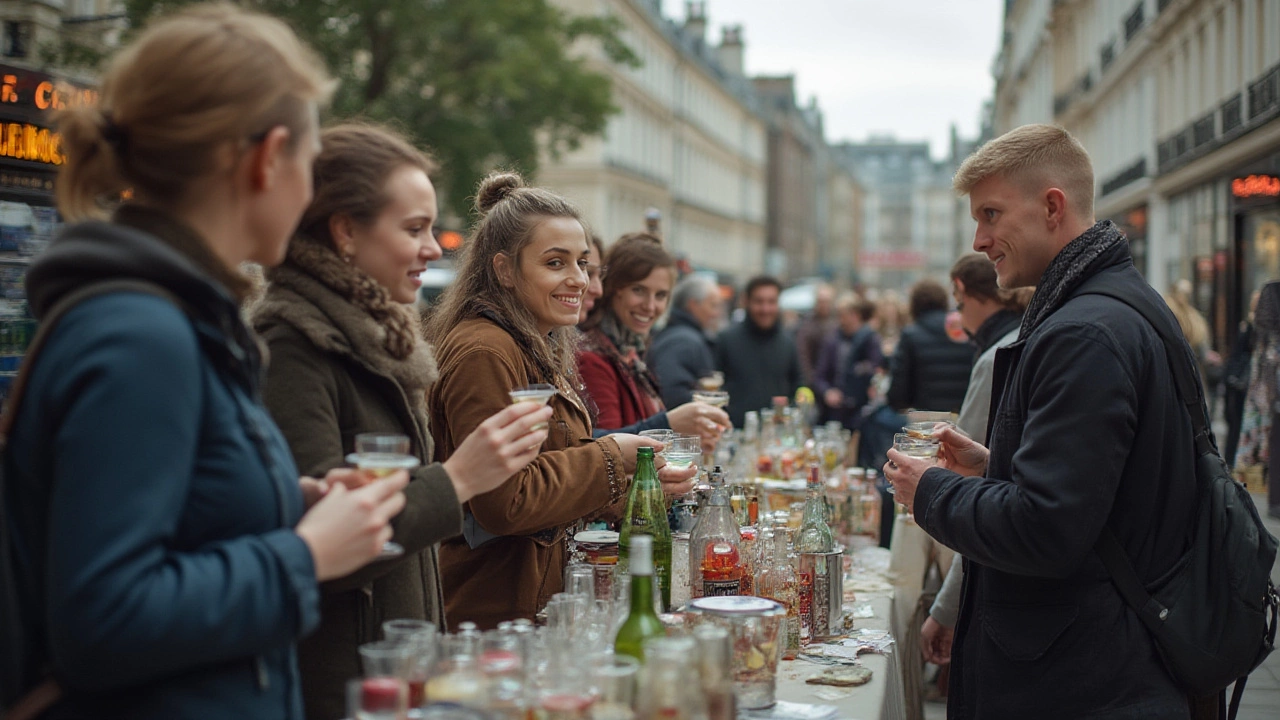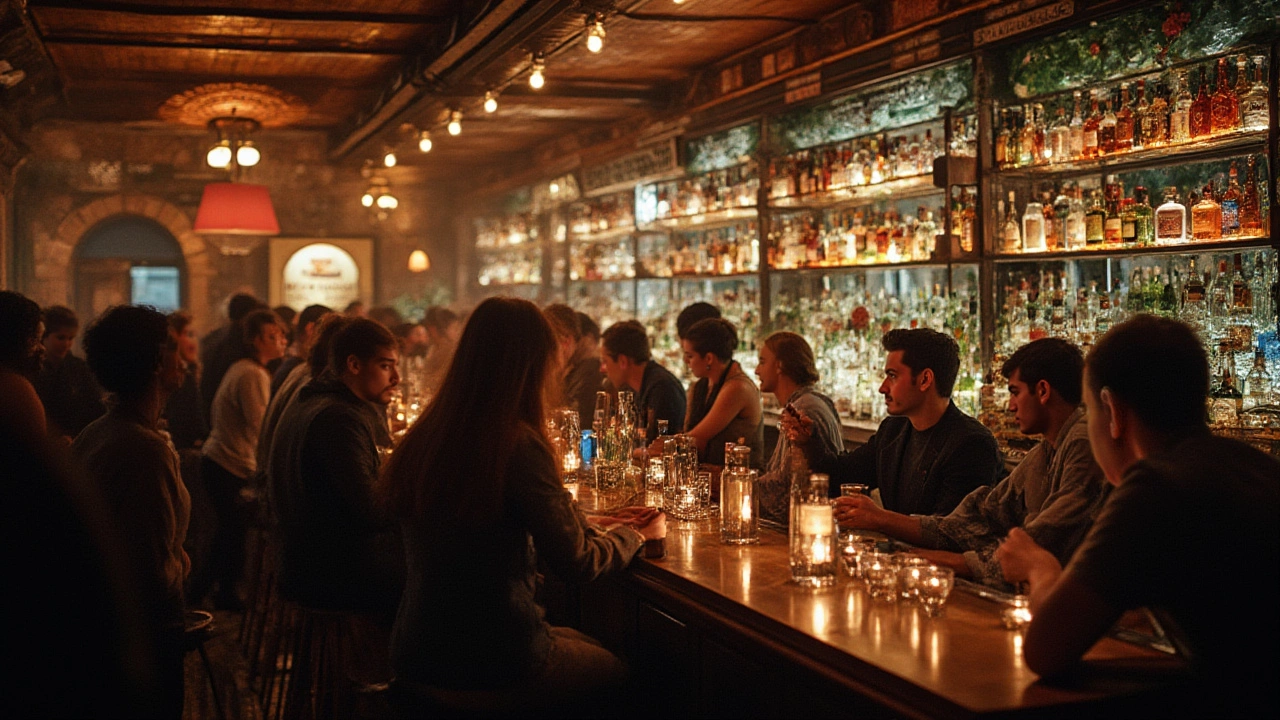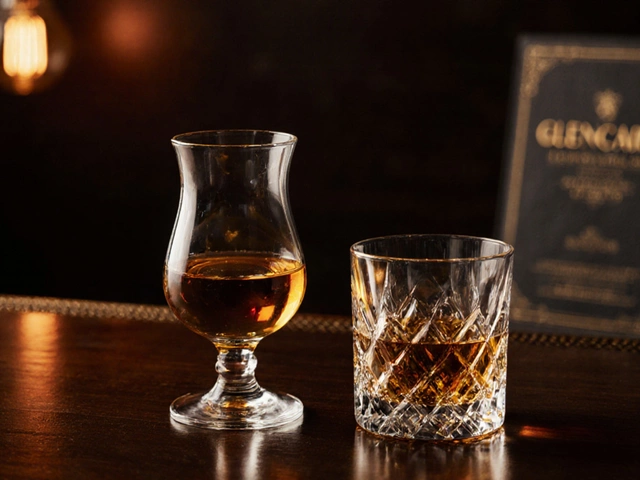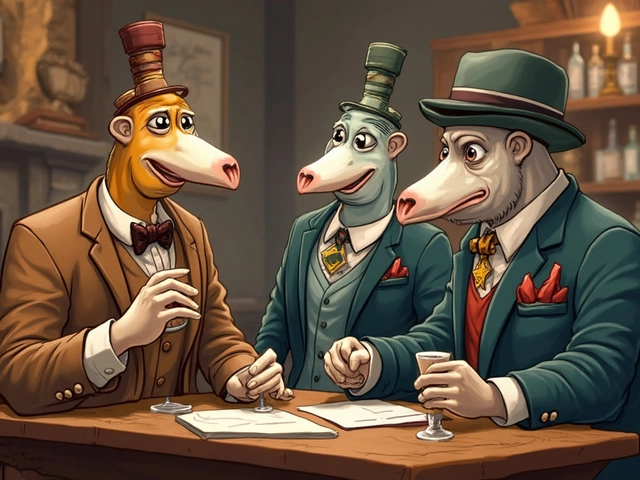Walk into most UK bars lately and you'll notice something strange—those gin menus once longer than your arm are shrinking. Gin, the darling of spirits through the 2010s, feels like it’s lost its shine. Only a few years ago, you couldn’t move without tripping over a craft gin bottle, and gin festivals buzzed like honeybees in June. Now, the buzz has faded, replaced by whispers of tequila and sneaky Cointreau bottle appearances. So, what happened? Why has gin gone from ‘must-have’ to ‘meh’?
The Rise and Fall of Gin: How We Got Here
The last decade saw gin riding ridiculously high. 2016 was a turning point: British gin sales leapt by 16% in a single year, and distilleries ballooned from just 116 in 2010 to more than 560 by 2022. Crazy numbers, right? Everyone seemed to want a piece of the gin revolution—flavors like rhubarb, cardamom, or even “unicorn tears” hit the shelves, and gin bars popped up in every city boasting drinks served with fancy botanicals or elaborate garnishes. Instagram loved it, and so did the people chasing photogenic cocktails. But that same wild success may have planted the seeds of decline. The market got oversaturated—seriously, even supermarkets had their own gins—which made picking a bottle feel like finding a needle in a haystack. With so much choice, folks eventually got bored, maybe even overwhelmed, and started chasing newer trends.
If you want hard numbers, look at industry reports: In 2022, UK gin sales dipped by 14% compared to 2021, despite their previous sky-high growth. And by July 2025, international gin exports have dropped back to near-pre-pandemic levels after peaking in 2019. It’s not just the UK. Australia, a big gin growth market, posted its first volume drop in over a decade last year. The explosion of pink and flavored gins probably didn’t help: lots of new flavor launches confused rather than delighted, and a lot of punters suspect quality took a nosedive as quantity soared.
- Gin decline is making headlines in pretty much every drinks magazine right now.
- Years of “gin fad fatigue” have set in—people just aren’t as curious about new flavors.
- Gin’s original, classic styles have struggled to stand out against so many wild variants.
Market data paints a clear picture. Take a look at this simple summary:
| Year | UK Gin Sales (in millions of bottles) | Distilleries Opened |
|---|---|---|
| 2016 | 40.0 | 210 |
| 2019 | 83.0 | 441 |
| 2022 | 70.5 | 562 |
| 2024 | 62.4 | 593 |
Gin, once riding high, now faces stiffer headwinds. That excess of choice, the loss of ‘premium feel’, and sheer exhaustion play their part. It’s not the first time spirits have gone from juggernaut to just another bottle on the shelf—but gin’s drop has been sharp. And the story is far from finished.
Changing Tastes: What Are People Drinking Instead?
The drinks scene’s always moving. Right now, other spirits are stealing the show. American whiskey and agave-based spirits—think tequila and its trendier cousin, mezcal—are all the rage among younger drinkers. A recent IWSR (International Wines and Spirits Record) report counted tequila as the world’s fastest-growing spirit; it’s up by double-digit percentages every year since 2021. Bartenders say folks in their twenties and early thirties just aren’t as loyal to gin as their older siblings. Cocktails like the Paloma or the straight-up Margarita aren’t just summer drinks anymore—they’re year-round favorites. Even rum, especially spicy and flavored rums, is taking a bite out of gin’s market share.
Generation Z, in particular, is rewriting the script. They view certain drinks as “millennial” or, harshly, “the stuff my parents drank.” For many, classic gin and tonic doesn’t hit the cool factor like a neon-colored mezcal cocktail. They flock to drinks with global roots—Korean soju, Japanese whisky, Italian amaro—and value stories, sustainability, and craft. Gin, despite its artisanal claims, has a hard time competing against drinks with fewer ‘gimmicky’ flavorings and more cultural weight. That’s especially true as the novelty of flavored or pink gins has worn off. There’s a real shift toward authenticity; drinkers want to know about where and how their spirit was made.
Even in supermarkets and cocktail bars, shelf space is shifting. A walk through Tesco or Sainsbury’s tells the tale: the gin aisle keeps shrinking, while tequila, vermouth, and even no-alcohol spirits swell with new brands. Cocktails reflect this too. Bartenders say that requests for Negronis, French 75s, or even classic gimlets are down. Instead, orders for Margaritas, Old Fashioneds, and spritzes are up. And let’s not forget craft beer and hard seltzers—those are nabbing the low-alcohol crowd who might once have picked a G&T. Even the zero-alcohol trend is reshaping everything; Seedlip and friends have stormed in, siphoning off drinkers just looking for a night off alcohol, but still wanting something more interesting than lemonade.
It’s not just hype. A huge UK YouGov drink trends survey published in April 2025 showed 24% of 18–34-year-olds listed tequila as their new 'default shot or spirit,' while gin fell below 12%. Similar patterns appear in Australia, the US, and mainland Europe. Gin hasn't vanished, but it isn’t the life of the party anymore.

Marketing Overload and the Gin Bubble
You’ve seen it yourself: at the height of gin’s boom, you couldn’t blink without seeing a zany label or influencer hyping a new pastel pink bottle. Brands poured millions into Instagrammable content, elaborate launch events, and viral “perfect serve” ideas using everything from edible glitter to color-changing tonics. But when everyone’s shouting, nobody’s really heard. The intense marketing race led to what industry insiders now call “the gin bubble.” Every pub, startup, and celebrity wanted their own label. Crucially, the market couldn’t support all of them, especially as many leaned into flavors that sounded great but tasted, frankly, a bit odd.
Ask people in the trade, and you’ll hear this story a lot. By 2022, London alone had more than 650 unique gin brands. New launches often seemed driven more by novelty than quality. Did anyone really want marshmallow gin, or did it just make a cute Instagram story? As gins became more out-there, the core product—the clean, crisp juniper hit of a classic London Dry—got lost in the noise. Regular drinkers were overwhelmed and not all that impressed.
Distributors and retailers responded quickly. Gin shelf space halved in chain retailers between 2022 and 2024. Even big hitters like Bombay Sapphire and Tanqueray have cut back on new launches and flavor experiments. The trade press started whispering about “category fatigue”—consumers simply had too many choices, and too much marketing spin. When everyone shouts about being “special,” it all blends into wallpaper.
Another thing: premiumization, which had fueled gin’s early boom, ran into trouble. Prices crept up, but rising inflation post-pandemic hit drinking budgets. Many drinkers traded down, grabbing supermarket or even own-label bottles when the spirit of spending faded. Gin, which once had a clear niche at the luxury end, suddenly felt... ordinary. You’d see the same gin in chain bars, supermarkets, and home mixers, with less of the “craft” feel people once paid more for.
The Path Ahead: Can Gin Snap Back?
Is gin gone for good? Doubt it. Spirits go up and down in cycles—rum, vodka, whisky have all had their moments in the sun… and the shade. The question is what gin does next. Some producers are already pivoting. They’re shrinking product lines, doubling down on “true” London Dry or revived vintage styles, and telling richer, more authentic stories about where their botanicals come from. Smaller distilleries are betting on terroir—the idea that locally foraged ingredients, unique water sources, or even heritage juniper can pull gin back from the flavorless masses.
The gin world is also experimenting with ready-to-drink (RTD) cocktails. These canned gin and tonics or spritzes are aimed squarely at convenience-loving party-goers or festival crowds. There’s growth here, according to NielsenIQ’s 2024 spirits retail report, which found RTD gin products grew by 7% even as bottled gin sales dipped. Meanwhile, bar professionals are trying to revive ‘forgotten’ gin classics—think Martinez, Tom Collins, White Lady—by making them a little more bold or seasonal. Education is part of this too: distillers host tours, botanicals walks, and masterclasses to win back geeks and curious newbies alike.
For the home drinks crowd, gin needs to remind folks why it was cool in the first place—versatility and real flavor. A good gin is unbeatable for a summer G&T, Negroni, or even a punchy martini. The trouble is convincing drinkers that the thousands of bottles on offer aren’t just variations on the same tired formula. Looking internationally, some hope lies in “new world” markets: Asia and Latin America’s growing middle classes, who are just discovering craft spirits and could offer fresh fans. But gin must learn the lessons of its own bubble—quality trumps noise, and authenticity outlasts any trend.
So, if you’re a gin fan, now’s a good time to poke around your local specialist shop and ask what’s really worth sipping. Maybe look for gins with locally sourced ingredients or clear stories about how they’re made. Skip the drum machine of new flavors—rediscover a few true classics. And maybe, just maybe, help gin find a way back from the edge.


